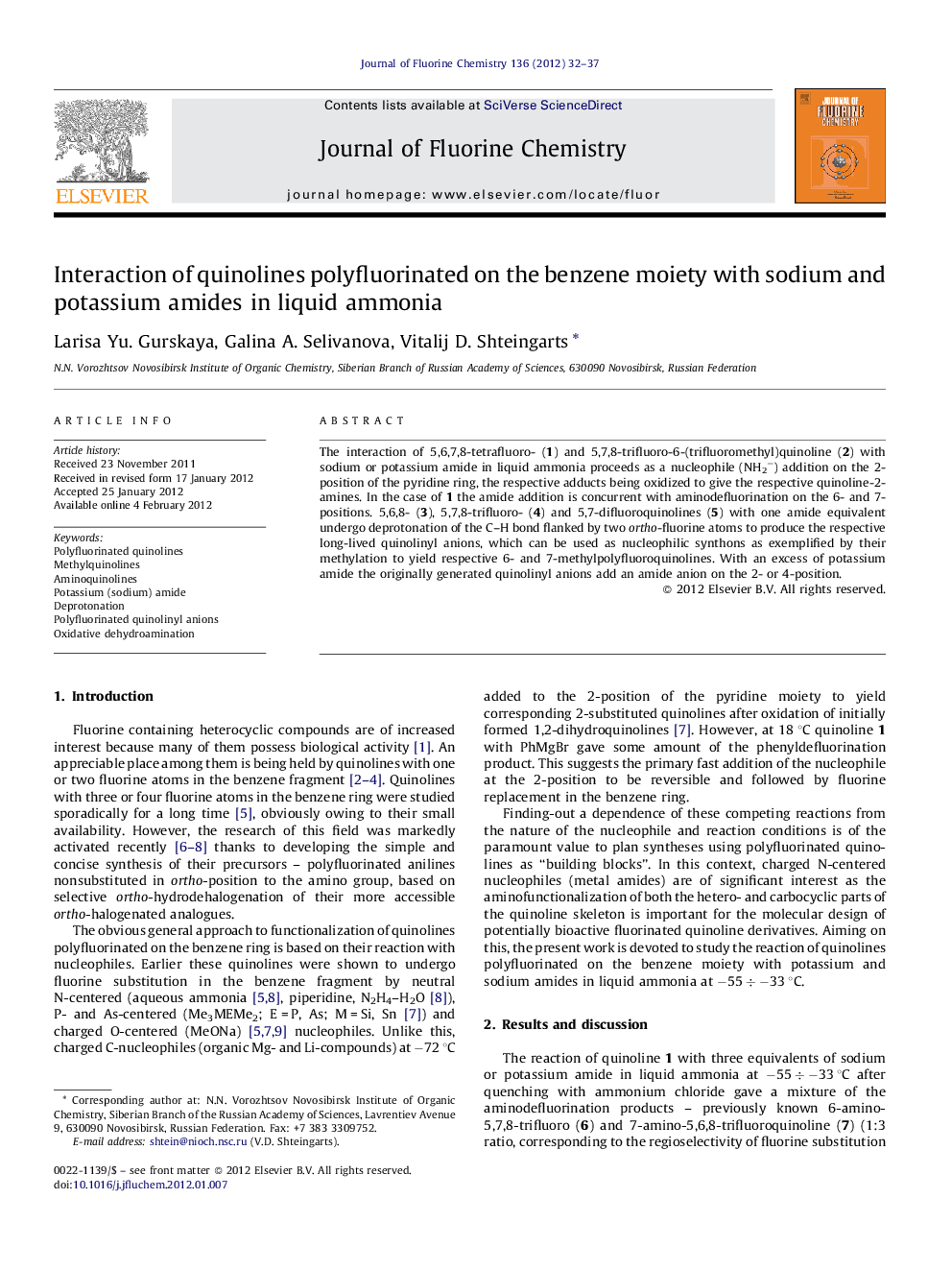| کد مقاله | کد نشریه | سال انتشار | مقاله انگلیسی | نسخه تمام متن |
|---|---|---|---|---|
| 1314066 | 1499364 | 2012 | 6 صفحه PDF | دانلود رایگان |

The interaction of 5,6,7,8-tetrafluoro- (1) and 5,7,8-trifluoro-6-(trifluoromethyl)quinoline (2) with sodium or potassium amide in liquid ammonia proceeds as a nucleophile (NH2−) addition on the 2-position of the pyridine ring, the respective adducts being oxidized to give the respective quinoline-2-amines. In the case of 1 the amide addition is concurrent with aminodefluorination on the 6- and 7-positions. 5,6,8- (3), 5,7,8-trifluoro- (4) and 5,7-difluoroquinolines (5) with one amide equivalent undergo deprotonation of the CH bond flanked by two ortho-fluorine atoms to produce the respective long-lived quinolinyl anions, which can be used as nucleophilic synthons as exemplified by their methylation to yield respective 6- and 7-methylpolyfluoroquinolines. With an excess of potassium amide the originally generated quinolinyl anions add an amide anion on the 2- or 4-position.
Quinolines polyfluorinated on the benzene moiety display three types of reactivity with MNH2 (M = Na, K), such as the NH2− addition on the 2-position, aminodefluorination or deprotonation of the CH bond flanked with two fluorine atoms, depending on the substituents set.Figure optionsDownload as PowerPoint slideHighlights
► The reactivity of quinolines polyfluorinated on the benzene with amide anion has been revealed.
► New polyfluorinated 2-aminoquinolines have been synthesized.
► Polyfluorinated 6- and 7-quinolinyl anions have been generated and used as synthons.
► New polyfluorinated 6- and 7-methylquinolines have been synthesized.
Journal: Journal of Fluorine Chemistry - Volume 136, April 2012, Pages 32–37